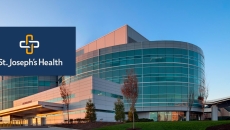Bill Siwicki
Everything starts with understanding the basics and doing them flawlessly, one cybersecurity expert advises. But there is much more work to be done.
With workforce shortages stretching staff thin, the technology helps engage new candidates, shorten time-to-fill and enable new hires success, says the health system's chief talent acquisition officer.
"We've been able to minimize interruptions to hospital operations and patient care, foster ongoing healthcare innovations with AI and analytics, and allow clinicians to access medical data in seconds," a tech director says.
Robin Farmanfarmaian, a Silicon Valley AI entrepreneur and author, explains how artificial intelligence can boost the efficacy of RPM and help democratize healthcare.
The academic medical center's physician chief of maternal fetal medicine explains how remote patient monitoring technology improves care during a very sensitive time in a woman's life.
"From the care team point of view, this means less activity but more action, less documenting but better documentation, and better coordination but less coordinating," one expert explains.
Leadership demands and imperatives have changed for CIOs, CMIOs and other health IT execs over the tumultuous years of the COVID-19 pandemic. An expert in leadership skills offers guidance.
Connecting care teams and enabling information sharing among hospitals, group practices and, most importantly, families is crucial to helping more senior citizens get healthcare at home.
The New York health system launched telehealth in 2019 and widely diversified its offerings to, among other things, decrease inpatient length of stay and readmission rates.
After redesigning and automating patient throughput processes, the organization experienced a 51% reduction in FTE daily hours worked in the logistics center. This included a drop from 116 to 56 hours per day.










